

Strong CPU Performance, Rich Application Scenarios
CPU Performance: RK3588 uses a quad-core Cortex – A76 + quad-core Cortex – A55, while RK3576 uses a quad-core Cortex – A72 + quad-core Cortex – A53 architecture for cost considerations, and is equipped with an ARM Cortex M0 coprocessor, providing more possibilities for related applications.

GPU Performance: RK3576 uses ARM Mali G52 MC3, while RK3588 is equipped with ARM Mali – G610MC4. Both support OpenGL ES 1.1, 2.0, and 3.2, Vulkan 1.2, and while both support similar graphics standards, RK3588 has a higher OpenCL version (2.2 vs 2.1).
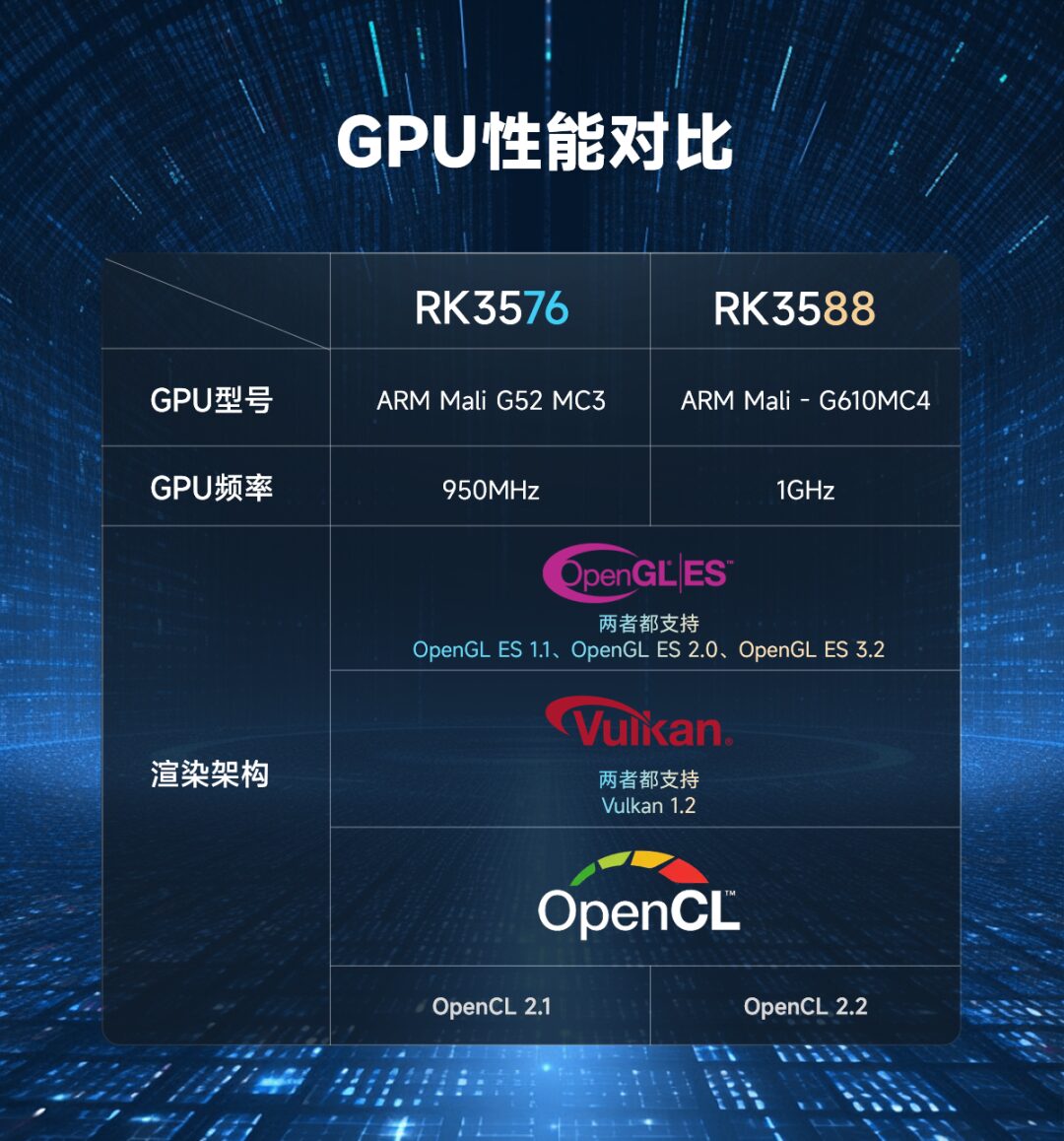
NPU Performance: Both are equipped with 6 Tops of computing power and support int4/int8/int16/FP16/BF16/TF32 and other data formats, adapting to diverse AI application scenarios.
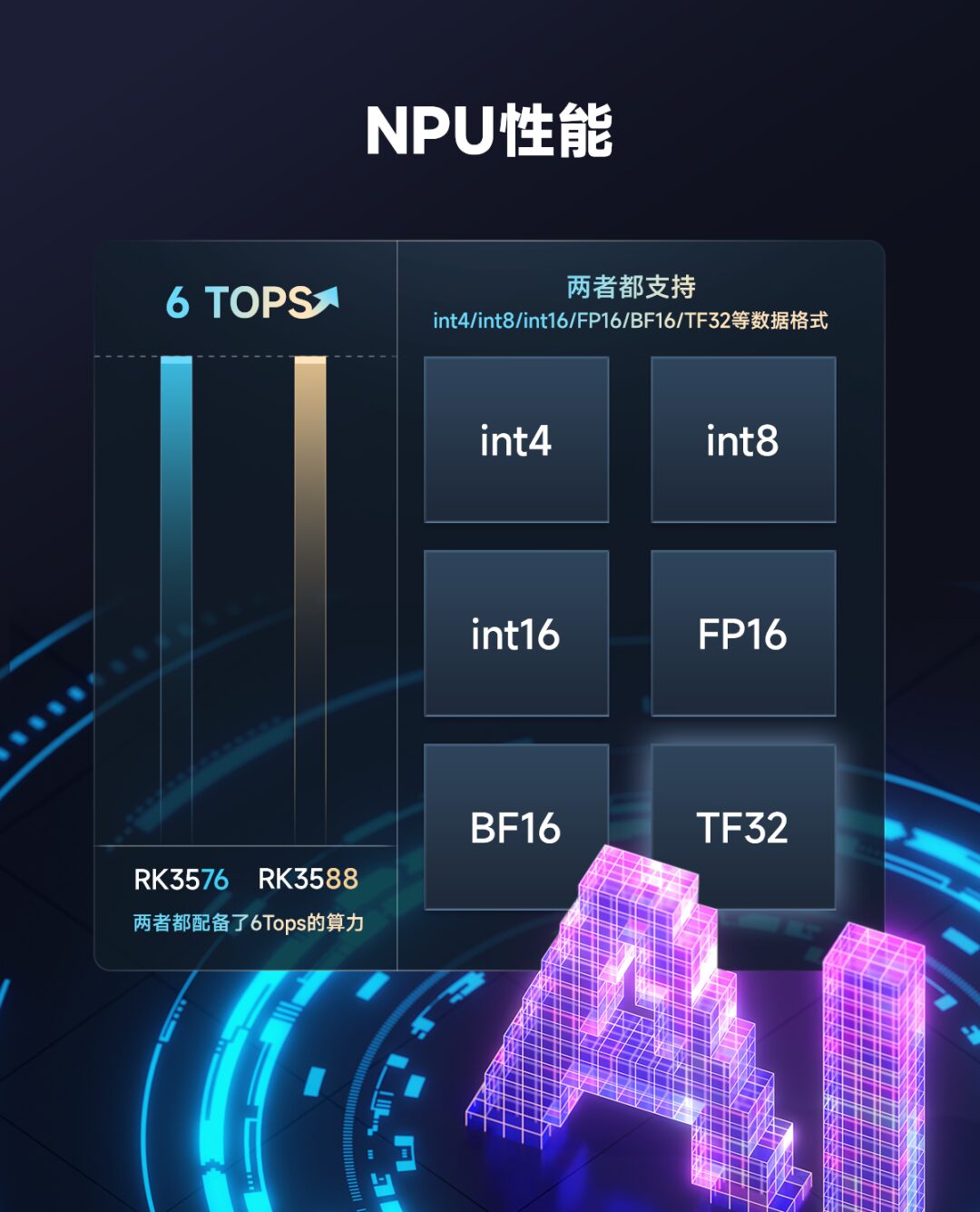
Memory and Storage
RK3576 supports 32-bit LPDDR4/LPDDR4X/LPDDR5, while supporting eMMC5.1, SDIO3.0 and SFC as well as UFS v2.0,
RK3588 supports 64-bit LPDDR4/LPDDR4x/LPDDR5, supports eMMC5.1; paired with HS400, SDIO3.0 paired with HS200, and supports NMe and SFC. The two differ in memory data width (64bit vs 32bit), with RK3588 having an advantage in data transfer.
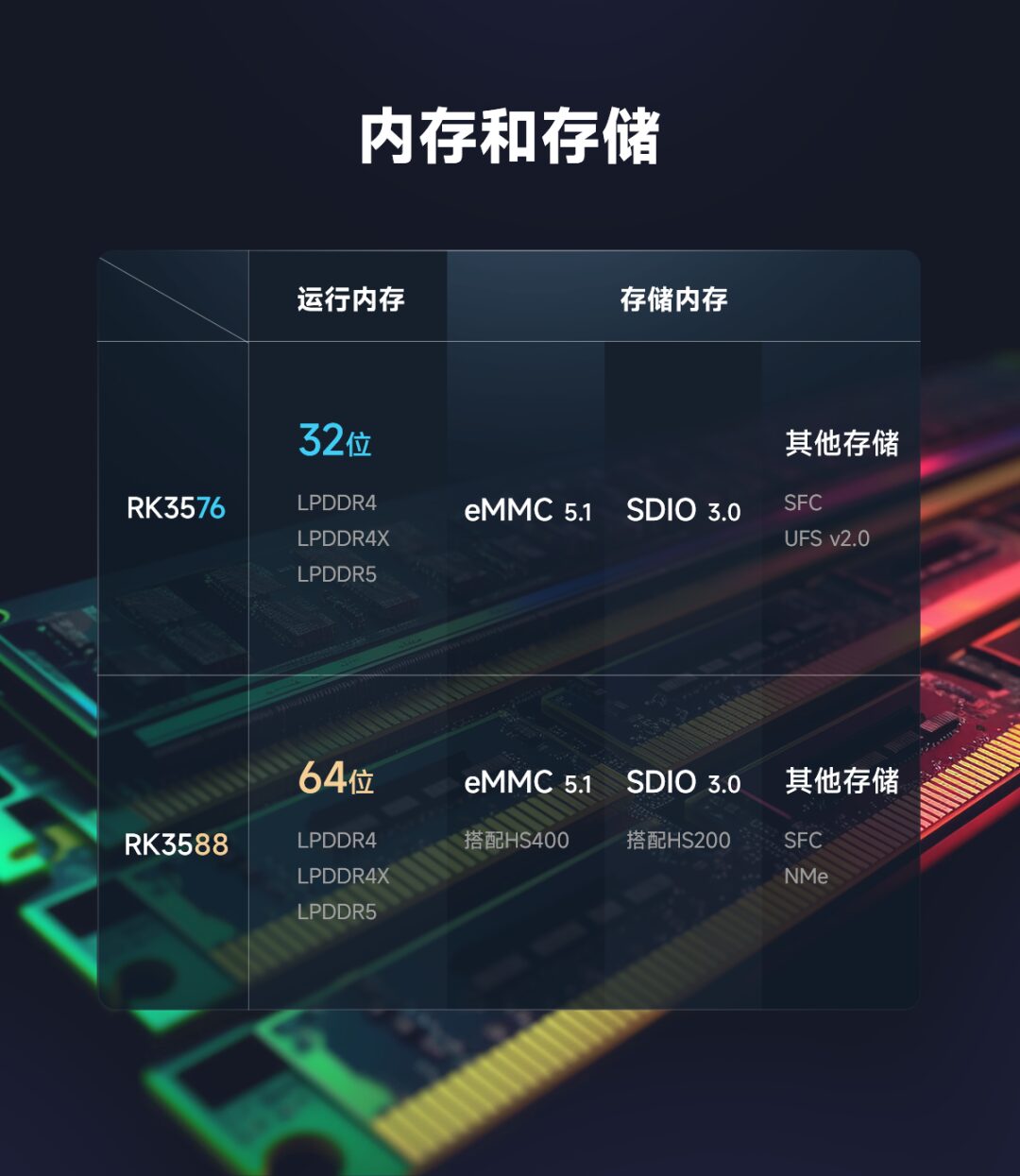
Superb Video Encoding and Decoding Capabilities
The encoding capability of RK3588 supports up to 8K@30fps H.264/H.265, while RK3576 supports up to 4K@60fps H.264/H.265. The decoding capability of RK3588 supports up to 8K@60fps H.265, while RK3576 supports up to 8K@30fps. Both have strong video encoding and decoding capabilities, with RK3588 excelling in 8K video encoding and decoding.
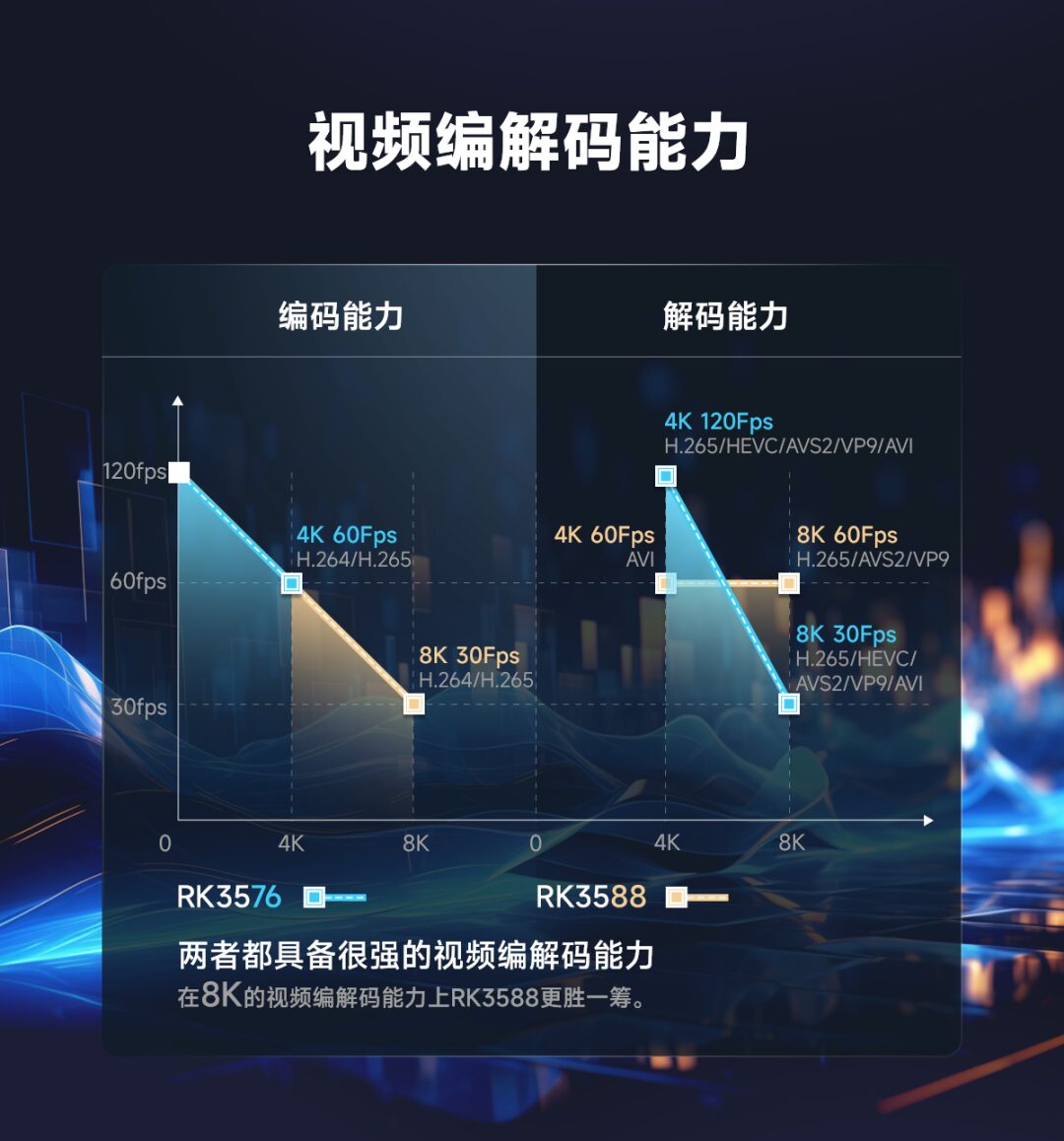
Supports Multi-Screen Display
Both support multi-screen display and various common display interfaces.RK3576 supports up to 3 screens (4K@120 + 2.5K@60 + 2K@60), featuring HDMI v2.1/ eDP v1.3 combo interface, MIPI DSI 4 channels, DP v1.4, and USB 3.0 combo (Type – C) interfaces.
RK3588 supports up to 7 screens and supports 8K, with dual HDMI2.1/eDP V1.4 combo interfaces, dual MIPI – DSI TX 4 channels, and dual DP v1.3 embedded USB 3.1 with audio and HDCP2.x.
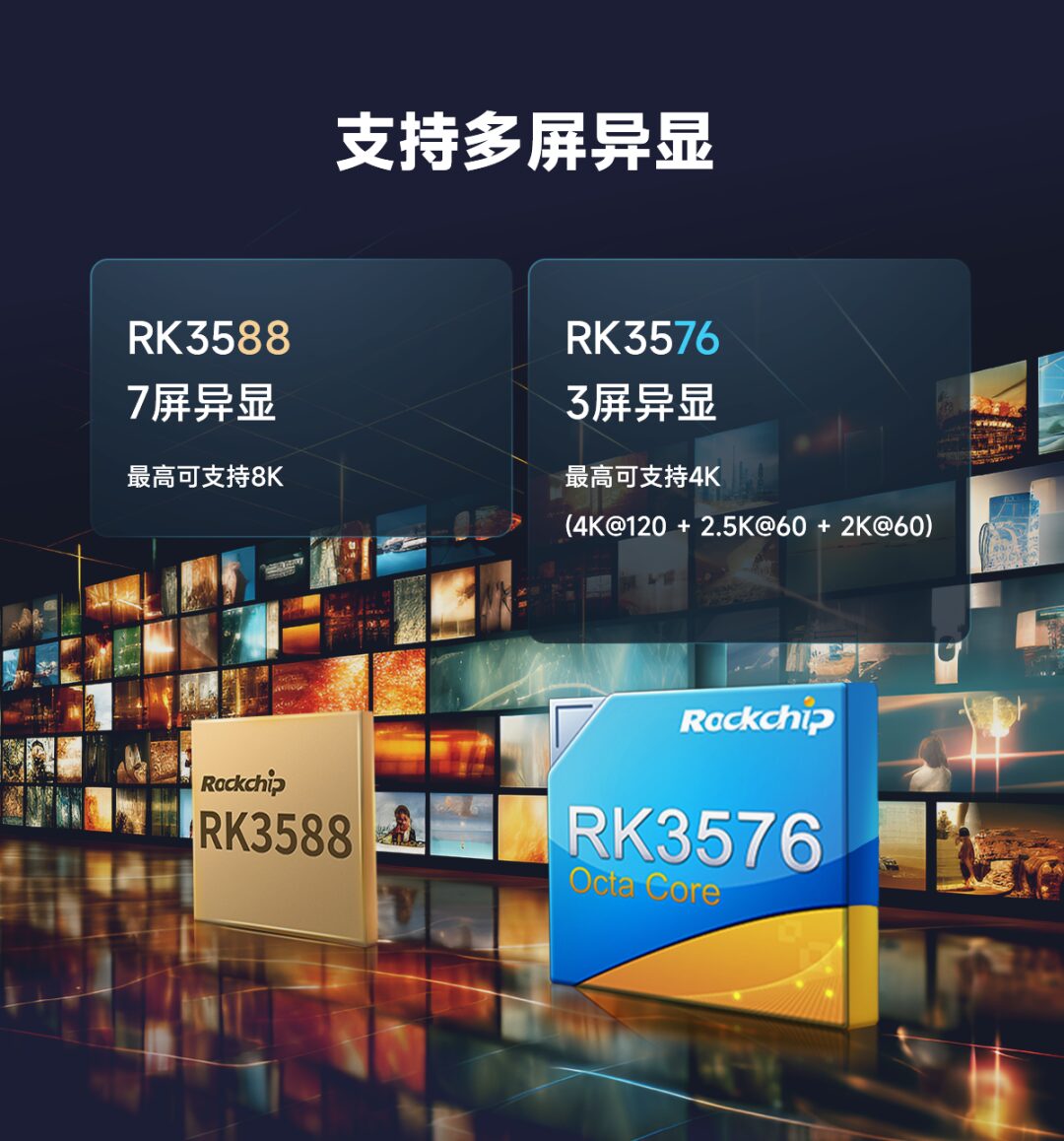
Camera Video Input Comparison
RK3576 supports up to 16MPixel ISP with HDR and 3DNR
RK3588 is equipped with 48M Pixel ISP with HDR and 3DNR, with RK3588 having a higher pixel ISP resolution (48M vs 16M)
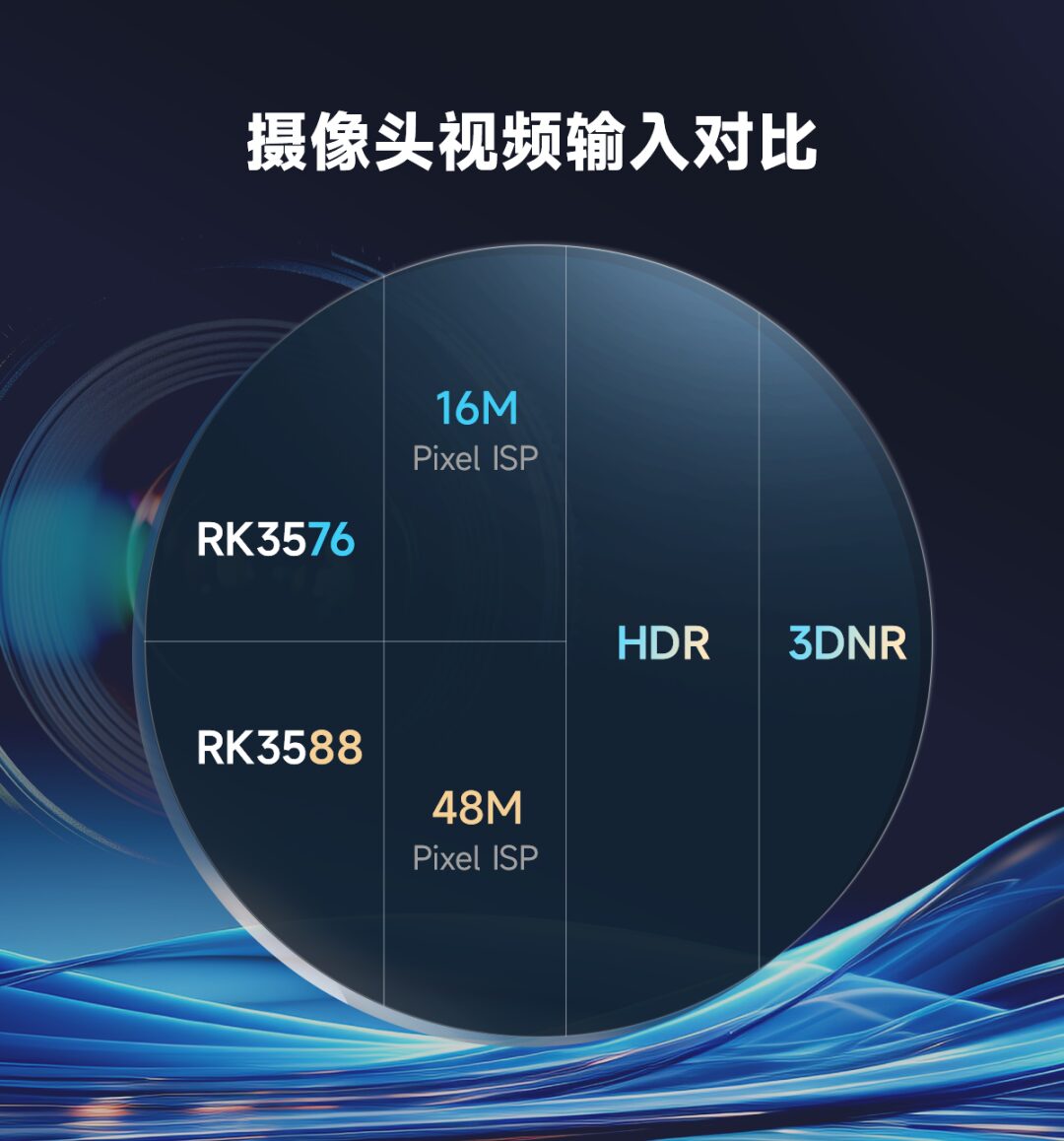
Rich Interface Configuration
Both are equipped with rich interface configurations, PCIe/ SATA/ TYPE C/ USB3.0/ USB2.0/ dual Ethernet ports/ multiple serial ports, meeting different product application needs.
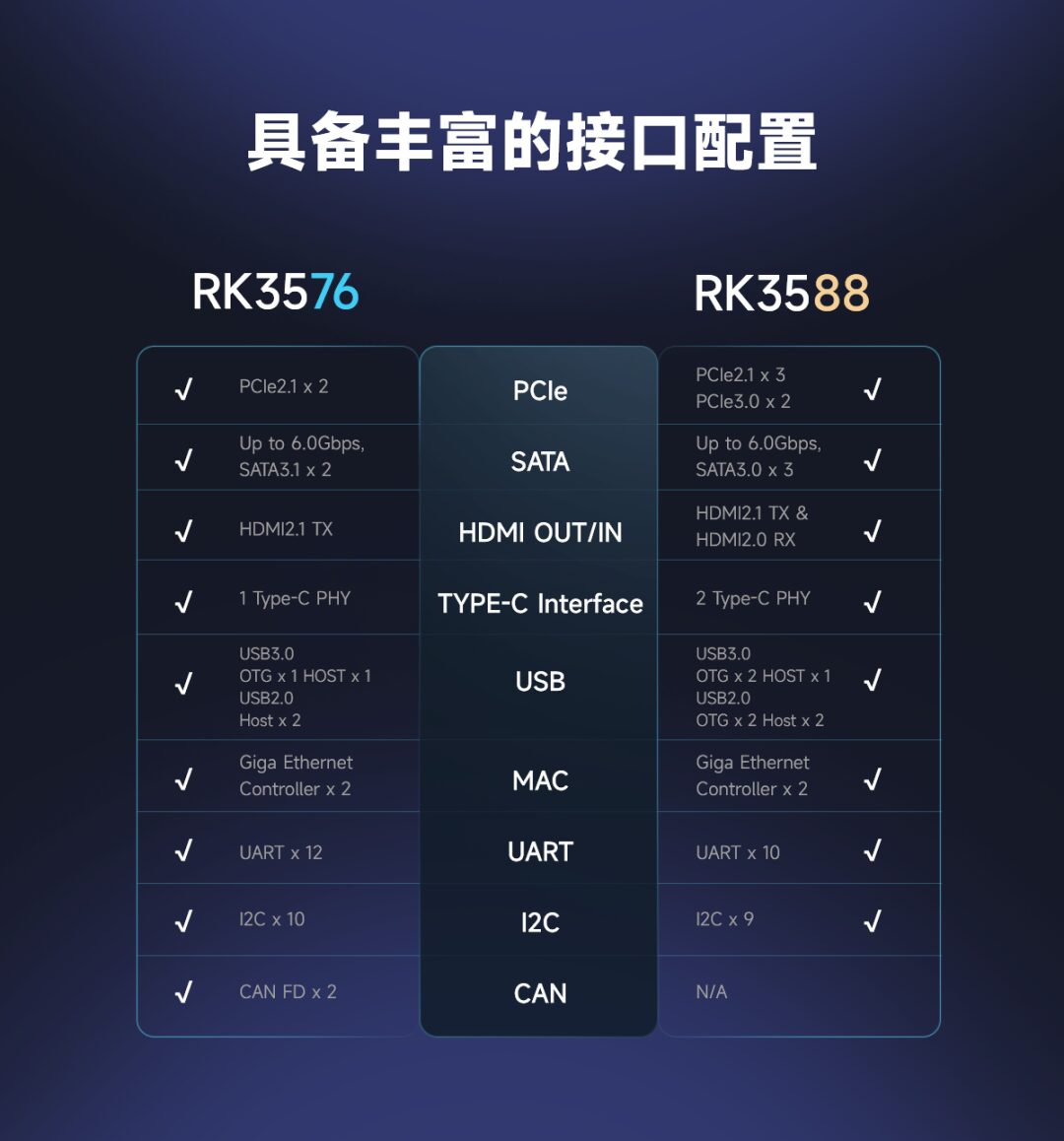
Summary: Cost-Effective RK3576
In terms of overall performance, RK3588 has stronger CPU performance, and for strong AI needs, RK3588 is recommended; however, RK3576, as Rockchip’s latest high-performance SOC, can be considered extremely cost-effective, achieving 70% of RK3588’s performance at 30% of the price, suitable for most AIOT, artificial intelligence, industrial applications, etc. RK3576, as another conscientious masterpiece from Rockchip, is your best choice.
